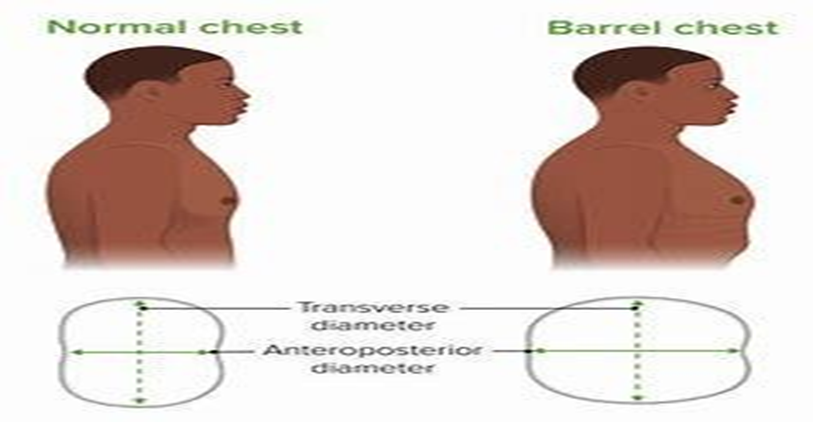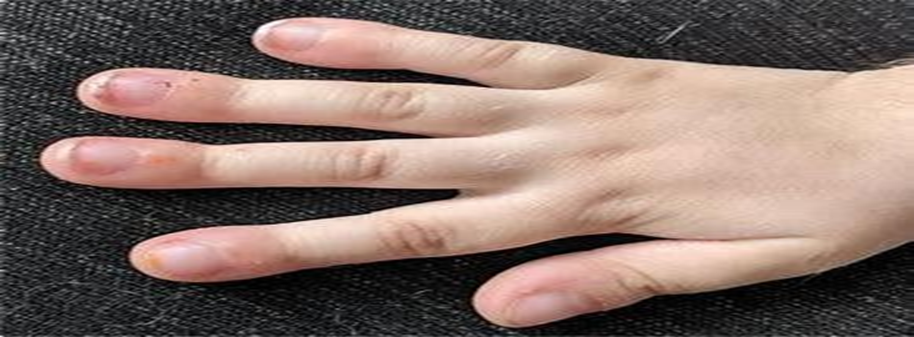A nurse is preparing to administer acetaminophen 10/mg/kg PO to a preschool child for fever. The child weighs 22 lb. Available is acetaminophen liquid 160 mg/5 mL. How many mL should the nurse administer? (Round the answer to the nearest tenth. Use a leading zero if it applies. Do not use a trailing zero.)
The Correct Answer is ["3.1"]
1kg = 2.205lbs Weight in kgs= 9.979
Desired dose= 10mg/kg Dose= 99.79mg
Volume= desired dose/ available concentration per ml Volume= 99.79mg/ 32
Volume= 3.12mls
Therefore, the nurse should administer 3.1mls
Nursing Test Bank
Naxlex Comprehensive Predictor Exams
Related Questions
Correct Answer is ["A","B","D"]
Explanation
A. Wheezing. Cystic fibrosis can cause airway obstruction due to thickened mucus, leading to wheezing and difficulty breathing, especially during respiratory infections or exacerbations.
B. A barrel-shaped chest is often seen in advanced stages of cystic fibrosis. It results from hyperinflation of the lungs due to air trapping, chronic lung disease, and repeated respiratory infections. The chest appears rounded and enlarged, similar to the shape of a barrel.

D. Clubbing of fingers and toes is a common finding in cystic fibrosis. It is caused by chronic hypoxia and inadequate oxygenation of tissues, leading to changes in the nail beds and fingertips. Clubbing typically develops over time in individuals with chronic respiratory conditions, including cystic fibrosis.

C. Thin, watery mucous is not expected in cystic fibrosis. Instead, cystic fibrosis is characterized by thick, sticky mucus due to dysfunction of the exocrine glands, leading to blockages in the airways, pancreas, and other organs.
E. Rapid growth spurts are not typically associated with cystic fibrosis. In fact, children with cystic fibrosis may experience growth failure or delayed growth due to malabsorption of nutrients, chronic illness, and increased energy expenditure.
Correct Answer is A
Explanation
A. Frequent swallowing is a common finding after a tonsillectomy due to postoperative throat discomfort and the sensation of having a foreign object in the throat (such as blood clots or mucus).
B. Reports of thirst may indicate dehydration, which can occur after surgery, especially if the child is not drinking enough fluids due to pain or discomfort. While dehydration can be a concern after a tonsillectomy, it is not a specific sign of hemorrhage.
C. Pain is common after a tonsillectomy and can be expected in the postoperative period. While increased pain may be present if hemorrhage occurs, it is not a specific sign of hemorrhage on its own.
D.Mouth breathing does not directly indicate bleeding and is more related to discomfort or difficulty breathing through the nose, especially if the child is experiencing throat pain. It is not a typical sign of hemorrhage.
Whether you are a student looking to ace your exams or a practicing nurse seeking to enhance your expertise , our nursing education contents will empower you with the confidence and competence to make a difference in the lives of patients and become a respected leader in the healthcare field.
Visit Naxlex, invest in your future and unlock endless possibilities with our unparalleled nursing education contents today
Report Wrong Answer on the Current Question
Do you disagree with the answer? If yes, what is your expected answer? Explain.
Kindly be descriptive with the issue you are facing.
